16 Reasons not to miss SPACE in 2022
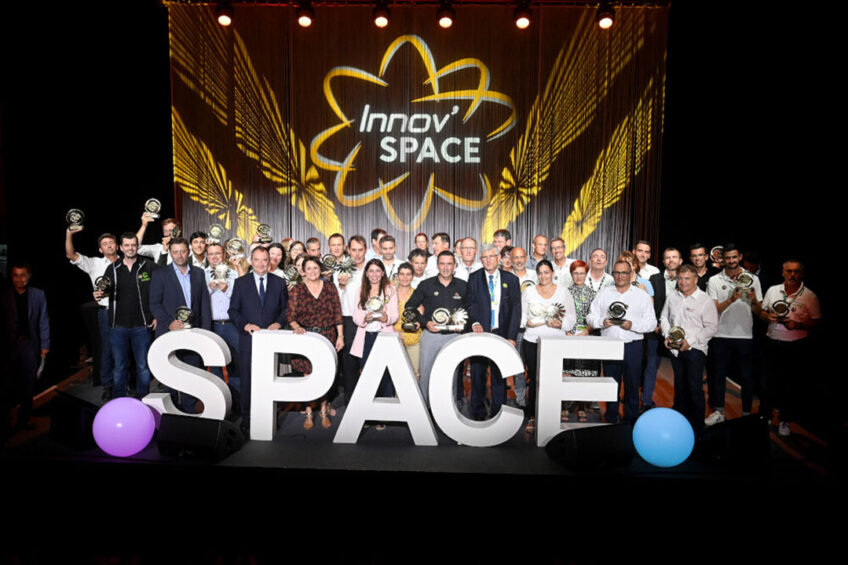
Traditionally, mid-September is the time of year that many in the international swine business head for Rennes in France to attend SPACE. What interesting swine innovations are on show this year?
Automatic feeding station for fattening pigs
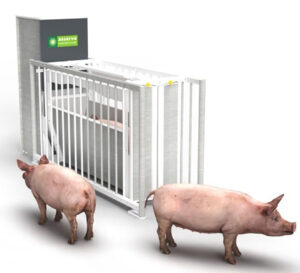
Asserva: Selfifeeder GFI ⭐⭐
The Selfifeeder GFI is a precision feeding station for pigs with Radio Frequency Identification (RFID) detection. A feeding management algorithm allows to feed between 32 and 40 pigs (15 for a classic station). The animal is weighed and then fed according to its weight with a choice of 2 different feeds, which allows a customised feeding for each individual. At the end of the finishing process, the weighing is used to mark the pigs, which are then painted in order to be as close as possible to the range. The precision feeding allows to reduce the value of the rejects in the slurry and an optimisation of the cost price. The number of animals fed by the station allows to reduce the cost per place and to be able to equip the farms. (Hall 8, stand A22)
Amino acid LCA according to production origin
Metex Noovistago: Amino acids – Origin matters ⭐⭐
Animal nutrition company Metex Noovistago performed a life cycle assessment (LCA) study about amino acids. The study includes the analysis of amino acids produced in its factory (France) and a validated benchmark method. The company gives access to the results of the 16 official LCA indicators regarding lysine, tryptophane, valine, arginine, isoleucine, leucine and histidine for each country producing for the European market (France, USA, Indonesia, South Korea, China, Brazil). Data variability between amino acids and origin is high: French production – low carbon footprint – has an impact 5 times lower than the Chinese one. The data, new for the animal nutrition sector, represent a big leverage of environmental impact optimisation. (Hall 9, stand D71)
Holder for a secure vaccination with Idal
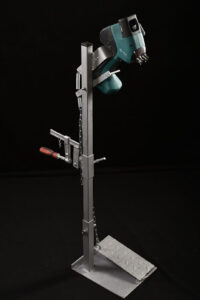
MSD Animal Health: Idal 3G Holder ⭐⭐
The Idal 3G Holder enables to fix and use the intradermal vaccination devices, Idal 3GM and 3GT, at man’s height while guaranteeing initial security of the trigger. The devices have been designed for swine needle free intradermal vaccination. The holder optimises manpower during vaccination and enables better task management. In addition, producers do no longer have to lift the weight of the Idal and its vaccines, allowing the producer to concentrate on vaccination. For the animals, the injection quality is optimal because the piglet is always vaccinated with Idal in the same way. The system also maintains the low risk of accidental injection thanks to the trigger’s activation system. (Hall 8, stand A20)
Improving intestinal health of piglets to reduce antibiotic use
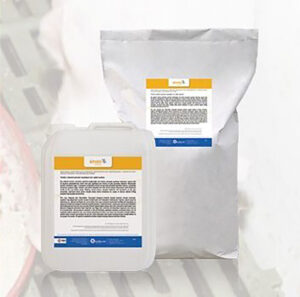
Biodevas Laboratoires; Sinea ⭐
Sinea was created by Biodevas Laboratoires to help piglets get through weaning. The product is a 100% natural alternative to strengthen weaned piglet physiology and to stabilise gut microbiota in order to reduce the use of antibiotic treatments. Made of phytogenic active ingredients, the product has a synergistic action on oxidative stress induced by weaning, inflammatory states, immunity allowing the stabilisation of gut microbiota, and the integrity of the intestinal mucosa in order to limit the prevalence of severe diarrhoea. Weaning is thus facilitated, with fewer digestive disorders and improved post-weaning performance. (Hall 5, stand D93)
Digital visits for an experimental farm
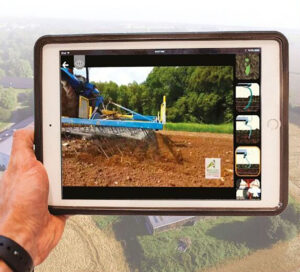
Chambres d’Agricultures de Bretagne: Digikerg ⭐
The Digikerg system is a digital and interactive tool integrating mediation technologies. Farmers, advisors or students will be able to live a new experience in the context of an experimental farm. Each participant is given a tablet that will enable them to participate in interactive learning activities and games. The first version of this training path, which focuses on agro-ecology, includes more than 100 activities, divided into 9 themes. It is designed to help participants discover the trials and innovations carried out by the Chambers of Agriculture of Brittany at the Kerguéhennec Agronomy Station. Through a 360° function and immersive qualities, it is possible to observe the evolution of crops over the seasons. The solution can be easily used off-site and will be developed on other experimental stations. (Hall 5, stand B33)
Autonomous robot for farm supervision
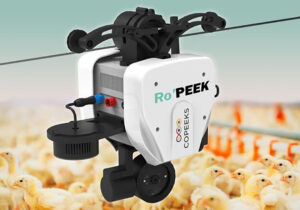
Copeeks: Ro’Peek ⭐
The Ro’Peek is an automated and autonomous robotic tool for the permanent monitoring of indoor animal or plant production areas. In buildings with few walls or partitions and a high ceiling height, a tool like this can be deployed to map in real time the atmosphere and the placement of animals. The product can be installed and operated quickly. The tool is self-contained and calibrates itself on the cable to map the entire physical space below dedicated to production. The tool moves repeatedly and continuously along its guide. The rotating camera captures information on both sides of the cable during the day and at night (infrared vision). By automatic image analysis and sensor data, an in-depth knowledge of the production area is achieved. (Hall 4, stand B46)
Quick colostrum intake evaluation
Cooperative Eureden: Pilot° ⭐
Pilot° is a diagnostic tool which evaluates the colostrum intake of piglets. The pig producer organisation Eureden carried out a study including more than 4,000 piglets and published at the French Swine Research Days (JRP) in 2022 and the European Symposium for Porcine Health Management in 2022. The study showed that colostrum intake is significantly linked to rectal temperature of piglets at 24 hours. A temperature of over 38.5°C at 24 hours, defined as homeothermic piglets, appears to be a clear threshold to segregate the animals. Pilot° is an easy and fast tool to implement in the field. If the results are not compliant, the cooperative’s technicians evaluate risk factors with farmers and provide advice in order to improve CI. (Hall 5, stand A19)
Dietary supplementary feed
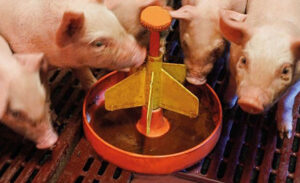
Idena: Forcix Iron ⭐
Forcix Iron is a dietary supplementary feed. It prevents iron deficiency anaemia in piglets. It is presented in liquid form and is distributed in an identical dose, in a feeder, from day 3 after farrowing or from the Monday following the week of farrowing for a period of 5 days.
Technical benefits: the product prevents anaemia in piglets in the farrowing house. It also contributes to the nutritional balance of the piglet by providing vitamins and trace elements. Economic benefits: It is distributed in the feeder in farrowing house, once a day for the whole litter. It saves a considerable amount of time and limits the cost of workforce in breeding.
Environmental benefits: It is packaged in 25 litres or more. It reduces waste on breeding, with less use of plastic or glass bottles.
Social benefits: In farrowing house, handling the piglets one by one puts a strain on the back and joints. The product eliminates the need to inject iron into the piglets and makes the work in farrowing house easier. (Hall 9, stand C59)
Training Kit “Pig Husbandry and Health”
Institut du Porc (IFIP): KifPorc ⭐
KifPorc is a free and innovative training kit, based on e-learning modules, to learn about good management of pig buildings in order to control pig health. The kit covers the basic technical aspects of biosecurity, environmental management and building layout. It is intended for agricultural students and technicians in the pig industry at the beginning of their career or who are not specialists. It is composed of 13 modules of 10 to 20 minutes, organised in 4 parts: understanding the link with pig health, fundamentals to master, practical application, validation of knowledge through a question and answer session. Each module has sequences of information gathering and sequences where the learner is proactive and interacts with the material. In that way, training is both fun and effective. With e-learning, learning takes place at the pace of each individual and according to the organisation that suits them best. (Hall 8, stand B32)
Radio controlled door for livestock truck
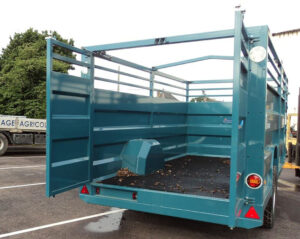
Lenormand Constructeur: Betadist ⭐
When transporting live animals, the opening and closing of livestock doors are particularly accident-prone (risk of jostling or being trapped by a door). The use of a radio-controlled opening allows the user a great deal of freedom of movement and to stay away from the livestock during these delicate operations. The doors are operated by synchronised hydraulic cylinder powered by a hydraulic unit driven by a 12V motor connected to the tractor’s battery to allow work to be carried out with the tractor’s engine stopped. A hydraulic safety system limits the closing force of the doors to protect the animals and the user. The device is also equipped with an anti-return device to prevent the doors from accidentally opening again when pushed by animals. A safety device keeps the doors closed, particularly for road transport. (Open air, stand C26)
Solution of functional amino acids and polyphenols to support gut health
Metex Noovistago: Inneus ⭐
Inneus is the first innovative range of solutions for pigs and poultry based on mixtures of functional amino acids and polyphenols. Those solutions target intestinal health of young monogastric animals during a stressful period (e.g., weaning for piglets). That is made possible by exploiting the role of amino acids in metabolic pathways related to immunity, oxidative stress and good functions of intestinal barrier, on top of muscle deposition. Moreover the synergistic effect of the amino acids with the polyphenols (specifically selected for this action) allows the AA to reach the hindgut and modulate positively the microbiota. The product acts as a booster of the defence capacities of the animal facing a stress. Its benefits are well documented by in vitro and in vivo trials, confirmed by several scientific publications. (Hall 9, stand D71)
Support tool to optimise finisher feeding programme
Mixscience: Megaplan ⭐
Megplan is a software dedicated to technical advisors to help them optimise and improve technical and financial performances in fattener units. Once all farm characteristics have been entered, the software estimates the potential of pigs due to the feeding programme and then compares it to the real performances. Depending on the difference between both, comments appear automatically to give the first improvement advises. Different changes can then be tested in order to find the best performances depending on the criteria’s focused on. At the end, a report including the actual result and the different tested scenarios can be sent to the breeder, with all technical and financial details according to market conditions. (Hall 9, stand C60)
2.5m3 livestock food silo
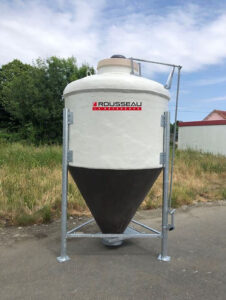
Rousseau: Mininstar 2.5 M3 ⭐
Ministar 2.5m3 is a new silo in the range of Rousseau silos in composite materials. It was designed with the imperative of eco-conception, with the replacement of fibre glass to vegetal fibres (flax), woven in France. Different types of flax fibres are used in order to manufacture those products : woven flax fibres (roving), short flax fibres and fine flax fibres. Morever, the polyester resin used is biosourced, with up to 39% renewable raw material content, that is Thixotrope.
The silo is available to store product either with 0.7 density (standard livestock feed, grains, granulates, or even wood pellets) or 1.5 density (mineral food complement). This silo can be fit with every accessory in the company’s range for the extraction of the stored product. In order to ease transportation and installing, the new silo is equipped with 2 handling rings on its dome, and with removable metallic feet. (Hall 3, stand D37)
Generation of personalised cleaning/disinfection protocol
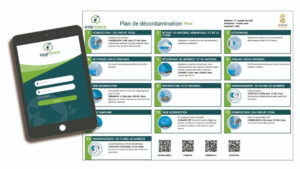
Synthese Elevage: Hygi’Check ⭐
Faced with the various epidemics and in particular viruses circulating in livestock, the implementation and respect of good hygiene practices are essential, but can be complex in practice. Hygi’Check is a web application that facilitates, optimises and secures the cleaning and disinfection operation during the crawl space of livestock buildings in poultry and pig production, depending on the current sanitary status. From a few specified parameters, floor area of the building, number of animals, etc. the application generates a personalised cleaning/disinfection protocol, to be displayed on the farm.
The protocol details all the actions to be carried out for effective cleaning/disinfection and it automatically indicates the products adapted to the sanitary context as well as the right quantity necessary, reducing the cost and the impact on the environment. A QR code allows access to the technical data sheets and safety data sheets of the products used in the protocol. (Hall 5, stand A 28)
Artificial insemination probe usable without cleaning the vulvae
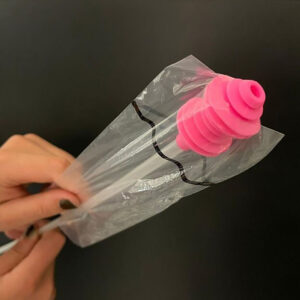
Yxia: Easy & Clean ⭐
Pig insemination is done in long and tedious steps. Innovations have been focused on the probe while cleaning the vulva, uncomfortable for the breeder, represents alone 50% of the overall time.
That is why Yxia created the Easy&Clean technology: a protective sanitary envelope on the tip of the probe. The aim is to protect the probe tip from vulvar dirt during its introduction. After opening the probe packaging, the breeder inserts the probe head protected by the technology and then a mark indicates to the breeder that he can pierce the protection with the probe to continue its introduction. The probe head is never in contact with impurities. The breeder no longer needs to clean the vulvae. The technology protection is easy to use but remains complex in its technical design: quality and position of the pre-cut, compatibility of materials, position of the marker are all elements that need to be mastered. (Hall 8, stand B33)
Connecting breeders and practitioners
Adventiel: Opti’Soins ⭐
The medical desert in animal care is becoming more and more intense in rural areas. There are fewer and fewer of them to respond to the requests of breeders. Farmers and practitioners are both suffering the consequences of this situation: a saturated schedule, potential delays that increase how long animals are strapped up, which can lead to serious injuries. The ecological and economic context, particularly linked to the increase in fuel prices, can discourage veterinarians from traveling long distances. Opti’Soins facilitates interactions between farmers and caregivers by a route optimisation module, a notification system of the practitioner’s delay, a remote assistance module (video, chat) and also by an emergency call function triggering the arrival of an on duty vet. (Hall 4, stand B43)
 Beheer
Beheer

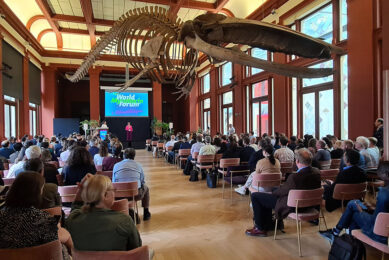
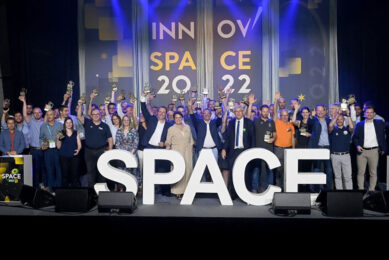
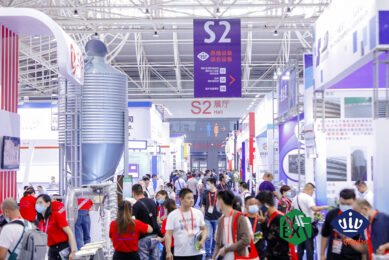




 WP Admin
WP Admin  Bewerk bericht
Bewerk bericht